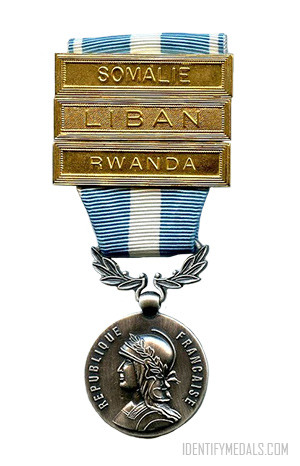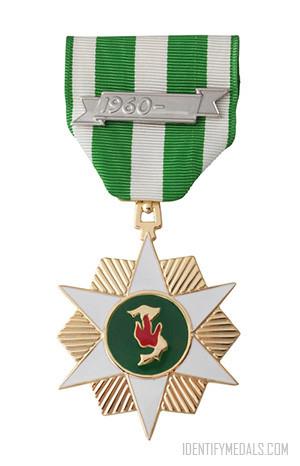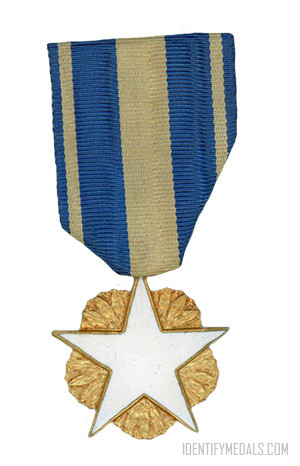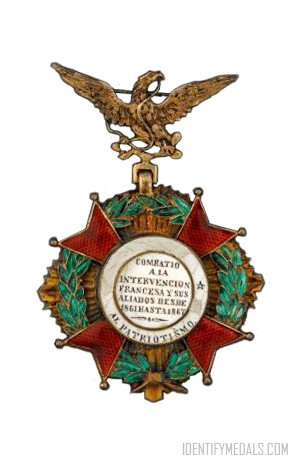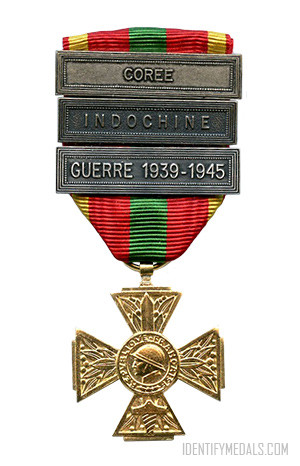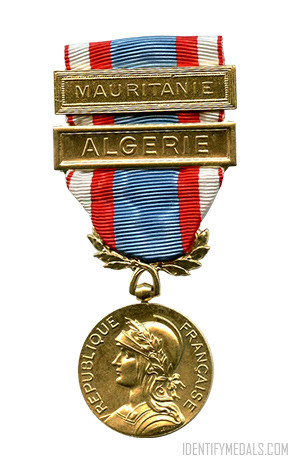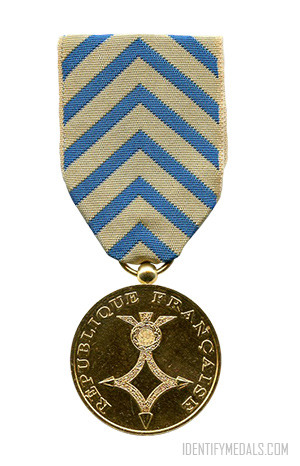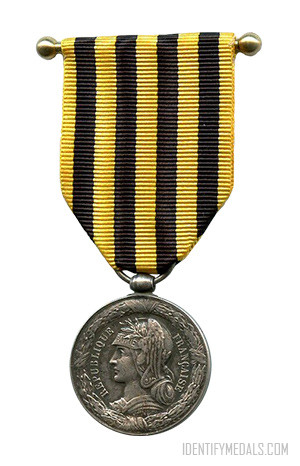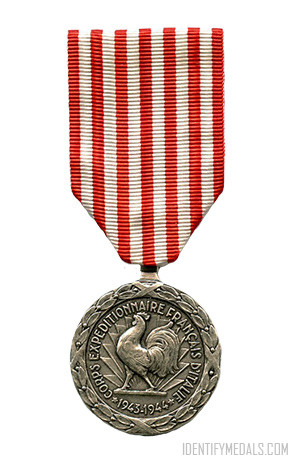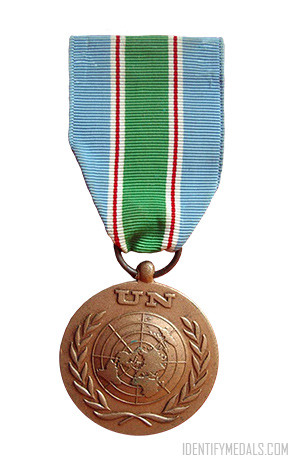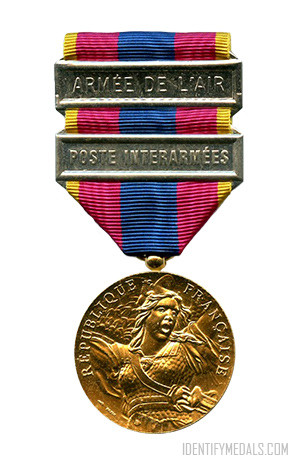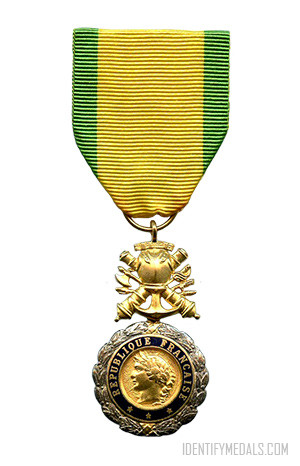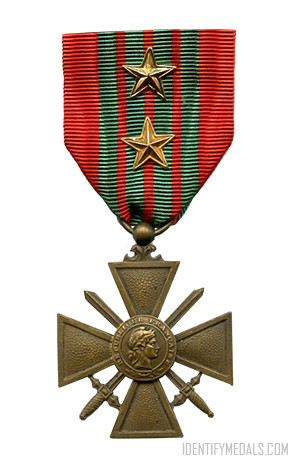The Overseas Medal (or Médaille d’Outre-Mer) is a commemorative or campaign medal issued to members of the French Armed Forces for participating in operations outside national territory. It replaced the French Colonial Medal by decree on 6 June 1962.
The areas of service are indicated by a gilt silver campaign clasp, there are currently 13 available:
- Cambodge (Cambodia)
- Liban (Lebanon)
- Tchad (Chad), awarded to all French personnel, military or otherwise, who served in Chad regardless of the length of service from March 15, 1960 to January 27, 2008 . As of January 28, 2008, the campaign clasp is awarded for fifteen days of consecutive service or a cumulative equivalent of non-consecutive days.
- Mauritanie (Mauritania), awarded to all French personnel, military or otherwise, who served in Mauritania from November 1977 to July 1990, regardless of length of service.
- Moyen-Orient (Middle East)
- Ormuz (Hormuz)
- République centrafricaine (Central African Republic)
- République de Côte d’Ivoire (Republic of Côte d’Ivoire)
- République démocratique du Congo (Democratic Republic of Congo)
- République du Congo (Congo)
- Rwanda (Rwanda)
- Somalie (Somalia)
- Zaïre (Zaire)
- Sahel (Mali)
The Overseas Medal Design
The medal’s design is the work of engraver Georges Lemaire, and it’s made in silver. The obverse shows a helmeted allegorical effigy of a woman as the personification of the French Republic, circled by the words “République française“. The reverse shows a terrestrial globe on top of trophies of military conquest with the words “MEDAILLE D’OUTRE-MER“.
The ribbon is sky blue and has three vertical white bands, the two side ones of 2mm and the central one of 7mm. The link is a silver laurel branches and the bars are gilt, showing the territory where the campaign occurred.

